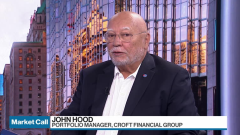Dec 4, 2023
How Alaska Airlines’ CEO Landed Deal to Buy Hawaiian Air Carrier
, Bloomberg News

(Bloomberg) -- Alaska Air Group Inc. Chief Executive Officer Ben Minicucci was all smiles as he made the media rounds Monday with his new partner, the CEO of Hawaiian Holdings Inc. — the two in coordinated aloha shirts.
Alaska said Sunday it would buy Hawaiian for $1.9 billion. The deal, code named project Triggerfish for Hawaii’s state fish, was the culmination of six months of negotiations between the two men as Minicucci looks to grow Alaska Air. While the market hasn’t warmed to an acquisition that faces tough antitrust scrutiny — Alaska’s stock dropped 14% in Monday trading — Minicucci isn’t afraid of a fight.
An Alaska Air spokesperson confirmed the project codename, but declined to comment further. The representative didn’t make Minicucci available for an interview. A representative for Hawaiian didn’t respond to a request for comment.
The 57-year-old Montreal native is described by people who’ve worked with him as an iron fist in a silk glove. An avid cyclist who practices transcendental meditation, Minicucci has a laser focus on details. He frequently told subordinates during negotiations about his working class background and that he’s more than willing to engage in a “street fight” if required, to get results, said people familiar with the matter. Minicucci is a veteran of the Royal Canadian Air Force.
Both sides of his personality were on display during takeover discussions with Hawaiian. Minicucci conducted most of the talks in person in Honolulu, charming Hawaiian CEO Peter Ingram and his team. He assured them he wanted to retain the brand, Hawaiian’s inter-island service and its status as a state champion.
Meanwhile, in an unusual maneuver, he dropped the purchase price during talks in an attempt to get the best value, people familiar with the deal said. That’s the reverse of how typical M&A talks tend to go. Buyers usually leave wiggle room for sellers to negotiate up. For Hawaiian, the move wasn’t warmly received, the people said. Still, Minicucci prevailed. Hawaiian has struggled to recover from a slow rebound in tourism from Asia to Hawaii and lower demand after the state’s wildfires in August.
To outsiders, the price at $18 per share in cash and about $900 million of Hawaiian’s debt, wasn’t low enough.
“I wonder why Alaska would take the time to do this deal,” George Ferguson, senior airline analyst at Bloomberg Intelligence, said in an interview. “Alaska talks about valuing this deal at 2019 earnings before interest, taxes, depreciation, and amortization, I just wonder if this is a company that’s ever getting back to that level. As Southwest enters this market, competition is materially different now.”
Even more worrisome to the market, is the very real possibility that the deal won’t get regulatory approval. Shares of the Hawaiian carrier surged a record 193% after the news of the deal, which comes at a lofty premium to their $4.86 close on Friday. The stock ended Monday at $14.22 each, but that’s still around 21% below Alaska’s $18-per-share cash bid. The gap indicates that traders anticipate a lengthy review process and see regulatory pushback as likely.
Hawaiian shares slipped 2.2% to $13.91 in premarket US trading on Tuesday. Alaska Air rose 0.4%.
“Given the thrust of airline regulatory scrutiny, we shall expect a ferocious DOJ review with litigation quite possible,” Cabot Henderson, a merger arbitrage strategist at JonesTrading, said via email. He estimated that a resolution is unlikely until the end of next year at the earliest.
Investors are watching the current legal battle waged by the Justice Department to block the $3.8 billion merger between Spirit Airlines Inc. and JetBlue Airways Corp.
Read More: JetBlue-Spirit Merger Trial Tests US Airline Deal Crackdown
This isn’t Minicucci’s first time bringing an outside brand into the fold at Alaska Air. He led the integration of Virgin America after its $2.6 billion acquisition. At the time, both carriers had built successful franchises, but had fallen behind. Three years later, Alaska said it had repaid half of the $2 billion it borrowed for the deal, before it entirely folded the Virgin America brand in June 2019.
The experience left him with the view that Alaska should have considered keeping the brand, people familiar with the matter said. Minicucci wants to learn from Hawaiian’s long-haul fleet to enhance the in-flight experience on Alaska, the people said.
That, coupled with the commitments to keep inter-island service, should help win over labor groups and local politicians, Samuel Engel, a lecturer at Boston University’s Questrom School of Business and a senior vice president at consultancy ICF, said in an interview. “There’s a feeling from the state, at the government and community level, that Hawaiian Airlines is a critical part of their state’s fabric.”
The Biden administration has taken an aggressive stance on airline mergers, setting Minicucci up for a regulatory battle. Minicucci was keen to point out on a Sunday conference call that the two airlines only have 12 overlapping routes. However, the deal will give Alaska its second top-tier hub in Honolulu.
Given Hawaiian’s financial position, with a need to refinance more than $1 billion of debt before 2026, Minicucci may be betting that a combination is more palatable to regulators than a bankruptcy.
“Big picture: A healthy airline is buying a sick airline,” Daniel McKenzie, a senior analyst with Seaport Research Partners said in a research note Monday.
--With assistance from Yiqin Shen and Mary Schlangenstein.
(Updates with early trading on Tuesday in 10th paragraph)
©2023 Bloomberg L.P.


